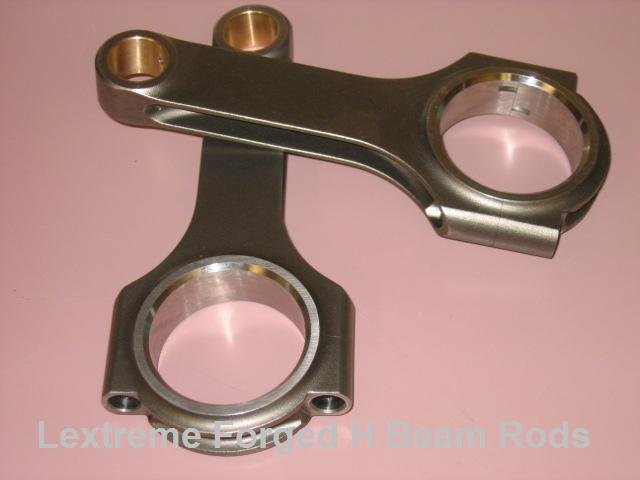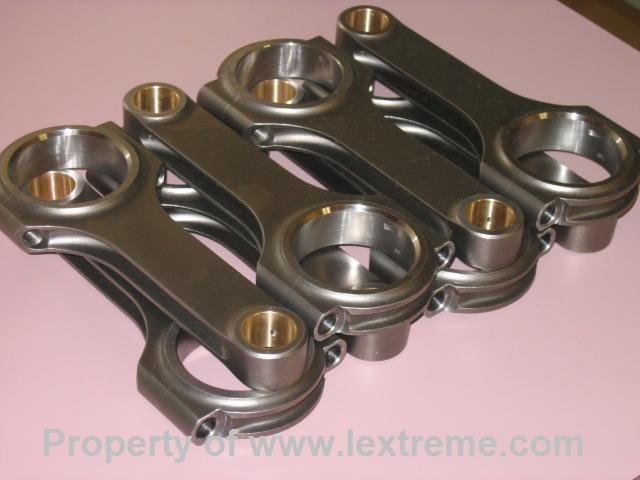jibbby
New Member
- Messages
- 3,824
- Location
- Santa Monica, California
After some research - Also you may have seen this topic discussed and over looked in the blown motor thread in the General Discussion thread...
It's come to my attention that when the rods fail on Xuz-fe motors, the weakest portion of the rod is at the big base ring portion... When a rod is thrown it appears in more then one case it is the big ring portion that cracks and not the center portion of the rod...
Now with that being said the base ring portions of the all the Xuz-fe motor rods are identical in every way....This would make them all break at the exact same power output...Around 500whp...
Any thoughts on this new revelation of mine?... I honestly don't think any of the rods are stronger then the others as so many have suggested on all the forums for years now...
I am going to post pictures to show what I am talking about.. Look at the bottom portion of all the Xuz-fe rods including the forged ones and let me know if you think there is a difference... As illustrated in the destruction picture you can clearly see the rod failure ring portion, and that is common...I found to other rod failure threads on the forums where the ring portion fails and not the center rod portion... Go figure?
Bottom line is all the rods are equal in strength... Any thoughts on this fellas? Does somebody know something about this that I do not?... As commonly known the 1uz-fe rods are to be the strongest..I think after research that is an incorrect statement unfortunately...:shock:
Look for yourself.....
It's come to my attention that when the rods fail on Xuz-fe motors, the weakest portion of the rod is at the big base ring portion... When a rod is thrown it appears in more then one case it is the big ring portion that cracks and not the center portion of the rod...
Now with that being said the base ring portions of the all the Xuz-fe motor rods are identical in every way....This would make them all break at the exact same power output...Around 500whp...
Any thoughts on this new revelation of mine?... I honestly don't think any of the rods are stronger then the others as so many have suggested on all the forums for years now...
I am going to post pictures to show what I am talking about.. Look at the bottom portion of all the Xuz-fe rods including the forged ones and let me know if you think there is a difference... As illustrated in the destruction picture you can clearly see the rod failure ring portion, and that is common...I found to other rod failure threads on the forums where the ring portion fails and not the center rod portion... Go figure?
Bottom line is all the rods are equal in strength... Any thoughts on this fellas? Does somebody know something about this that I do not?... As commonly known the 1uz-fe rods are to be the strongest..I think after research that is an incorrect statement unfortunately...:shock:
Look for yourself.....




